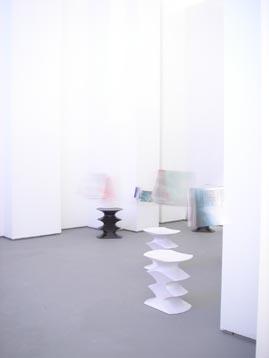Venice Biennale 06

September 10, 2006 - November 19, 2006
Switzerland – An Urban Portrait
What has happened is unbelievable, indeed almost inconceivable. Since we began our urbanistic studies on Switzerland in 1999, institutions and compa-nies that seemed sacrosanct as an expression of continuity have suddenly be-gun to move. Developments have occurred that contradict the conventional cliché of this country’s proverbial slowness and resistance to changes of all kinds.
Our “urban portrait” was motivated by the wish to examine Switzerland more closely, and from a new perspective, at the start of the twenty-first century—especially because all of the participants have been living and working in this country for a long time, and therefore believe they know it blind, so to speak. We were interested above all in the question of the specific urban character of Switzerland. We recognized that globalization actually reinforces differences in patterns of urban behavior. These patterns are inevitably formed in the physical reality of cities and landscapes, in specific forms of urbanism. We wanted to explore this, with the help of our students, using the nearest object of study: Switzerland.
We wanted to proceed meticulously and take a very close look but without getting bogged down in details, like going into the Kleinbasel section of Basel to describe an urban culture marked by immigration or studying Zu-rich’s Bahnhofstrasse to evaluate statistically its mythical discretion and ex-clusivity. These urban phenomena are important for everyday urban culture, but when we talk about “specific urbanism,” we mean something else, namely, how Switzerland's urban culture is different from, say, that of France, Holland, or China.
Switzerland’s specific urbanism proves to be a kind of culture of refusal and prevention of density, of height, of mass, of concentration, of chance, and of nearly all the other characteristics that are desirable in a city, and which the Swiss also love with a passion—just not in their own backyard.
We employed a variety of means in order to understand how the processes of urban transformation function in Switzerland, where the trends are going, how people move around at work or in their spare time. Frequently it was the antiquated sketch that enabled us to achieve mutual understanding most quickly and directly.
What resulted from these sketches in the end was a project, an idea for a fu-ture topography of Swiss development, based on five typologies: the metro-politan regions, the urban networks, the quiet zones, the alpine fallow lands, and the resorts.
We chose a project that is radical and new because it calls for and reinforces differences and because it overcomes borders. However, the project is also simple and almost obvious, because it accepts the existing situation and rein-forces present trends. The five typologies of our project are really nothing other than large-scale forms of the transformation processes that we observed. They are not imposed, invented, or superimposed by an external force; they are simply there already, and they offer an opportunity to initiate an order that is new but not alien and to change ingrained patterns of perception in a coun-try where urban transformation is taboo and can barely be channeled.
It is largely unintentional that this “urban portrait” has become a kind of quiet pamphlet championing different kinds of urbanism in a globalized world—based, paradoxically, on a country in which urbanism has always been sup-pressed.

